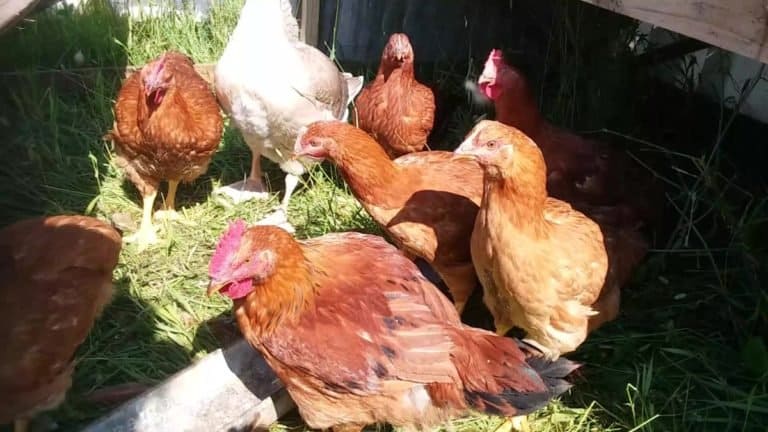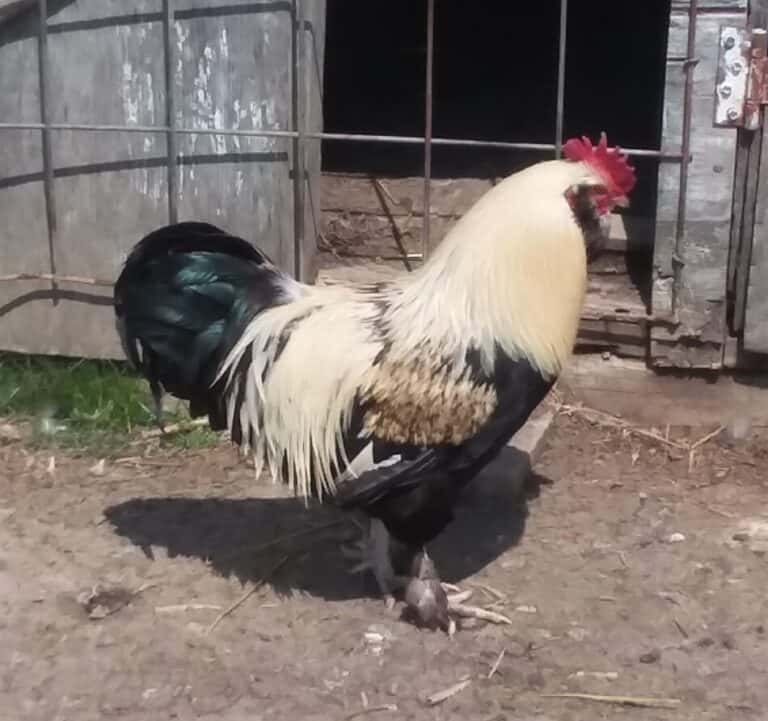6 Tips To Naturally Fatten Up Your Chickens

A happy, healthy chicken will naturally “fatten up”. So the real question is: what do we as chicken owners need to do to make sure that our chickens are happy and healthy?
Chickens need plenty of water, appropriate feed, grit and a comfortable place to live to naturally reach ideal body condition.
Great news, whether you are raising broilers or layers, the things a chicken needs to be at her best are the same! There is no magic involved, just simple basics that everyone can do.
Is Raising Chickens For Eggs Worth It? goes over the economics of keeping your hens.
Chickens will naturally grow to their genetic best when given the care that makes them happy and healthy. As long as your birds are genetically capable of giving the results you want, your husbandry will get them there!
Chickens need plenty of water at all times
Keeping ahead of the water needs of your flock is the number one way to make sure your management will never be restricting growth of your birds.
Your chickens will vary in water needs as they grow, as the weather changes and as feed sources change.
For example, chickens on ground feed only will need more water than chickens with access to fresh forages.
You may be wondering, what does water have to do with feed? A lot, actually. Your birds must take in enough water to properly digest feed.
Limiting water = limiting feed intake = limiting results!
This is true for layers and broilers, alike. Plenty of water for your birds equals your best growth and or egg production.
Backyard Egg Producers gives you a few other birds to provide your family with eggs, if you want to branch out from chickens.
Use the appropriate feed for the bird’s growth stage
The second key to keeping your chickens fat and sassy is to make sure they are getting the right feed for their growth stage.
If you find that you are not getting the results with your chickens that you were hoping for, double check your feed ration.
For broilers, this means having them on broiler feed (not regular chicken feed!) the entire time. Broiler feed is much “higher test” than regular chicken feed, because broilers have a much higher growth rate.
Here is a link to broiler feed ration that I use. Compare it to yours.
If you have layers, you’ll need to have them on laying mash. The laying mash is very similar to a maintenance feed, but has significantly more calcium, which will make a huge difference to your hens.
This is a link to a laying hen ration that we use, compare what you see here with what you are feeding and adjust if needed.
Healthy chickens enjoy a variety of foods
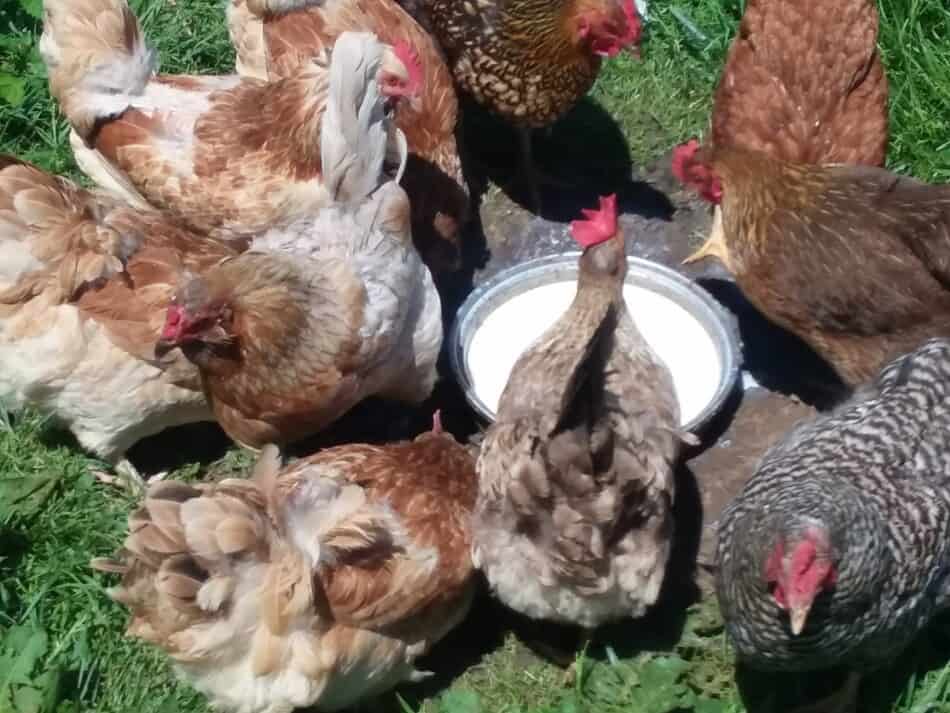
While it’s true that chickens can and do eat nearly anything, the feed you give them should always be of high quality.
Chickens are amazingly not picky. Sometimes I see one of our hens eat something unexpected and all I can think is “Wow, I can’t believe she ate that.”
If you want your layers to scratch through the compost pile, super! Make sure your hens have the option to get laying mash whenever they want it so each hen can eat what she needs to keep up her egg production.
Keep the chickens comfortable
Comfortable chickens grow and produce better, it’s really that simple. How do you keep your birds comfortable?
Make sure they have:
- shade
- shelter from weather, including wind
- a roost, for layers
- plenty of bedding
- a predator resistant coop
Comfortable broilers grow better!
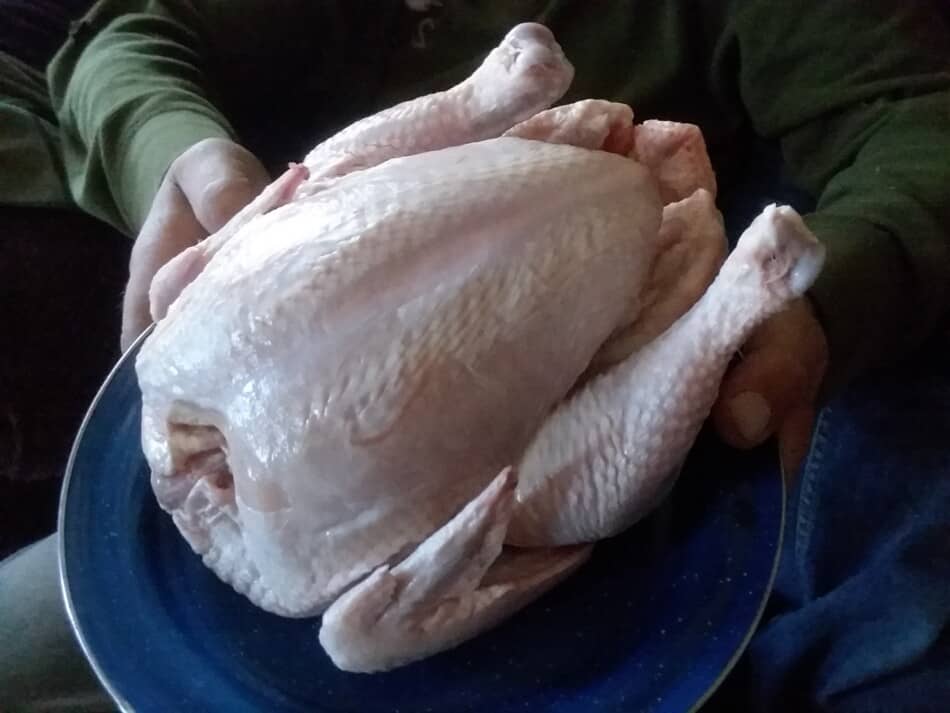
Shade for your chickens is critical, especially when you are raising broilers. They can overheat easily as they get closer to processing size.
Shelter for broilers is a bit different than for other chickens, you might have them in a building or in a yard pen.
Either way, make sure they have space to get out of the wind and rain. Don’t forget about water coming in from outside, you don’t want the broilers to sleep in a puddle!
Broilers do not need a roost, they will get too big for it. Broilers sleep on the floor.
Bedding is a biggie for broilers that are not on grass. They need to process all of that food, meaning they make a lot of manure!
Plentiful bedding keeps the broiler pen clean and stores the nutrients from the manure so your compost pile will be better than ever, this year!
Stress will slow down your broilers growth and stress can come in any form-poor pen condition, too many birds for the space, poor weather to name just a few.
Of course, you can’t stop all stress, but you can do your best to keep it minimal.
Predators will notice your broilers, count on it! Have a predator resistance plan in place.
It can be as easy as securely covering the pen and making sure there are no “easy to slip under the side of the pen” size holes when you are moving your pen over uneven ground.
If you live in an area with heavy predation, bring your birds in to a secure area at night.
In our experience, house cats are your biggest predator when the birds are small then wild animals as the birds get bigger and possibly moved further from the house!
Comfortable hens will lay more eggs!
Laying hens are very similar to broilers in all but roosting. Everything else listed above for broilers, shade, bedding, predators, all applies to laying hens, as well.
Roosting is a key security behavior for adult chickens. Hens want to roost at night, so give them a good place to hop on to! The roost does not need to be anything fancy, just secure and up off of the ground a couple of feet.
Make your roost out of wood, like a dowel rod or a branch that looks like one. Avoid anything metal, like pipe. Even though pipe is round, it’s too harsh in the cold.
Speaking of cold, normally in the winter you’ll also be dealing with lowered levels of daylight. If you want more hours of activity for your hens, consider supplementing their natural light.
Bedding for layers can be overlooked, but is especially important when your layers do not have access to the yard. If you smell ammonia, you are late with the bedding, add some!
Another tip on bedding laying hens, if you are getting dirty eggs, use more bedding. A clean, well bedded nest box has clean eggs in it.
If you find that you are having to wash quite a few eggs, you are doing extra work to make up for lack of bedding materials.
Predators are a common cause of laying hens not going back to their coop at night, they do not feel secure.
When you notice your hens “acting weird” look into it. Predators will keep coming back for easy access meals! Don’t let your girls become some varmint’s hot lunch!
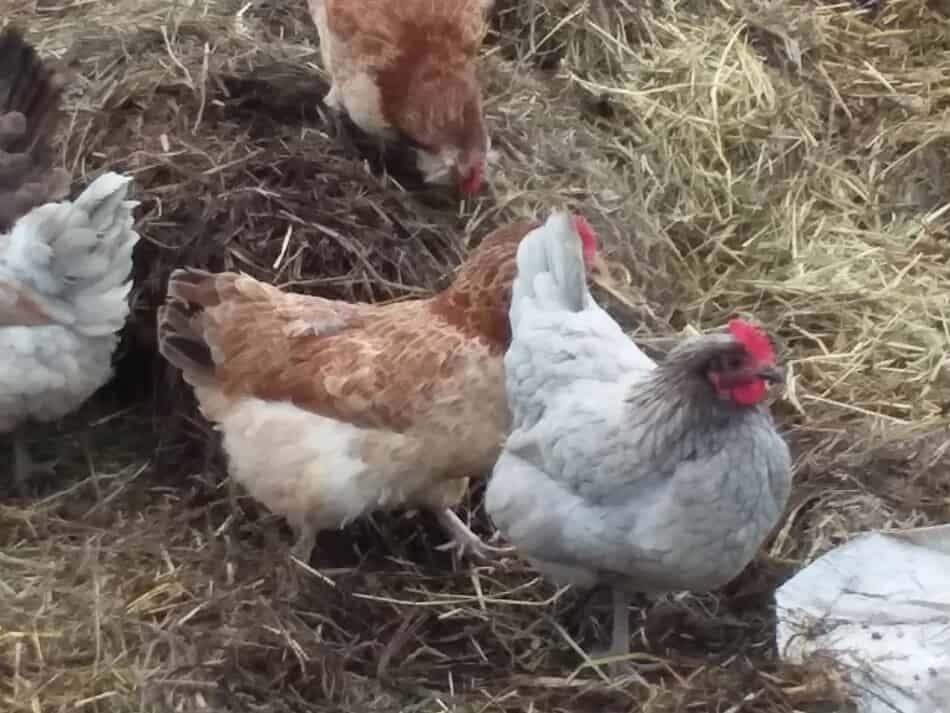
Have the right size grit available
Chickens need grit to make their digestive system work.
Grit is cheap and will increase your flock’s ability to use the feed you give them! If you want to know more about grit for chickens, read Chickens And Grit.
Eating feed is just the first step to using that feed for growth. Your chickens have to process their feed a bit before they can use it, just like you digest your feed before your body can use it.
The grit (little stones or rocks) help your chickens grind the food so they can digest it.
There are two sizes of grit, get the smaller grit for younger chickens. Adult chickens can have either size, I use what I have before buying more.
If your birds are loose, they are probably able to source their own grit. If your birds are not able to get to dirt they will need grit.
Let the chickens roam on grass
If at all possible, put your birds outside (once they are out of the brooder) so they can roam around. Chickens love to peck around in your lawn and see what they can find.
How does this make them gain weight? That’s easy, happy birds grow better. Chickens want to be able to do natural chicken type behaviors. Your birds will be healthier for it.
Feeding Chickens gives you some tips on general management of your laying flock by Dr. Jacquie Jacob of the University of Kentucky.
Double check breed performance
A final tip on fattening up your chickens is to look into the performance (growth rate or laying ability) that your birds are supposed to be achieving.
No matter how well you manage your flock, they can only perform to their genetic potential.
Here are some examples to help explain what I mean.
Example 1: less common heritage breeds. I ordered some Salmon Faverolles because I wanted to try a less common heritage breed of chicken.
(We have always had a variety pack of chickens, I was hoping to find a breed I really liked and concentrate on having one breed.)
The Faverolles I got seem to be slower growing than other dual purpose breeds that we have raised. This growth rate is not “a problem” with the birds or the breed, it is just a characteristic.
I get a kick out of these girls, the Faverolles are wonderfully friendly and attractive birds. They are complete sweethearts and I love their looks, but if I wanted fast growing birds I needed to pick a different breed.
Example 2: traditional breed chickens for meat. Anyone who prefers the taste of traditional breed chickens meat will need to raise their birds for significantly longer than someone raising broilers.
Traditional breed birds mature at 5-6 months, broilers are 6 weeks. The taste of the two birds is quite a bit different, which makes sense with how different the birds are in genetics and growth rate.
Be sure you plan on the extra time needed for these traditional breed meat chickens.
Plenty of people prefer the taste of traditional chicken breeds over broilers. You might as well raise what you like, right?
These are just two examples of times when your expectations and the characteristics of the birds you have may not match. If this is the case, adjust your plans or start raising a different breed or type of chickens.
The beauty of chickens is that they are so varied! Look around, you can find something you like that will suit your needs and the needs of your birds.
Our local hatchery, Meyer Hatchery, has great descriptions of the chickens they sell, including what you can expect from each breed.

